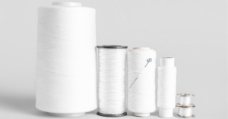
Explore Polyester Yarn and Its Manufacturers in Pakistan
By Syeda Rida Shammas
Polyester yarn, a versatile and widely used material, has become a staple in various industries due to its exceptional qualities and adaptability. In this comprehensive article, we will delve into the intricacies of polyester yarn, exploring its unique attributes, origins, production process, and the possibilities it offers, including its potential for dyeing. Moreover, we will introduce you to a reliable source for your polyester yarn needs: Zaraye, your ultimate B2B sourcing partner.
Qualities of Polyester Yarn
Polyester yarn is renowned for its outstanding qualities. Its durability is a testament to its resilience in the face of wear and tear. The strength of polyester yarn ensures that it can withstand rigorous conditions, making it a preferred choice for numerous applications. Its resistance to wrinkles and creases is a boon in the fashion industry, where maintaining a polished appearance is crucial. Additionally, polyester yarn's low moisture absorption rate makes it suitable for outdoor textiles that must endure various weather conditions. Its versatility extends to colour retention, allowing for vibrant and long-lasting hues even after repeated washing.
Furthermore, polyester yarn is known for its excellent resistance to chemicals and abrasion, making it an ideal choice for industrial applications. Its UV resistance makes it a preferred material for outdoor furniture and awnings. Polyester yarn's inherent fire resistance is another remarkable quality, making it suitable for applications where safety is paramount.
Will Polyester Yarn Melt?
One of the most frequently asked questions about polyester yarn revolves around its melting point. Polyester yarn, composed of synthetic polymers, indeed has a melting point. The temperature at which it melts can vary depending on the specific type of polyester, but generally, it ranges between 250°C to 260°C (482°F to 500°F). This feature makes it essential to consider the intended use of polyester yarn, especially in applications where exposure to high temperatures is a concern.
Understanding the melting point of polyester yarn is crucial in industries such as firefighting, where protective gear must be resistant to heat and flames. It also plays a significant role in the automotive sector, where polyester yarn is used in upholstery and other interior components.
How Is Polyester Yarn Made?
The production of polyester yarn is a multifaceted process involving several stages. It starts with the polymerization of ethylene glycol and dimethyl terephthalate or purified terephthalic acid to create the polyester polymer. This polymer is then melted and extruded through fine holes to form long filaments. These filaments are then stretched, solidified, and wound onto spools, resulting in the final polyester yarn. The process can be modified to produce different deniers and textures, catering to various industry needs.
The spinning process plays a crucial role in determining the properties of the polyester yarn. It involves extruding the molten polymer through spinnerets, which are fine holes in a metal plate. As the extruded polymer passes through these holes, it solidifies into filaments. The diameter of the spinneret holes, the speed of extrusion, and the stretching applied to the filaments all influence the final characteristics of the yarn.
Polyester yarn can be produced in various deniers, which refer to the thickness of the individual filaments. Fine denier yarns are smoother and softer, making them suitable for applications like clothing and institutional textiles, where comfort is essential. On the other hand, coarse denier yarns are stronger and more durable, making them ideal for applications in industrial and technical textiles.
Can Polyester Yarn Be Dyed?
Polyester yarn's dyeability is influenced by its hydrophobic nature, which can make dye absorption challenging. However, advancements in dyeing technology have made it possible to dye polyester yarn effectively. Disperse dyes, specifically designed for polyester, are commonly used. The dyeing process often involves high temperatures and pressure to facilitate dye penetration into the polyester fibres. With the right techniques and equipment, polyester yarn can be dyed in a wide spectrum of colours, offering creative possibilities in the textile and fashion industries.
The dyeing process for polyester yarn typically consists of several steps. First, the yarn is prepared by scouring to remove any impurities or residual chemicals from the manufacturing process. Then, it is immersed in a dye bath containing dispersed dyes and a carrier agent, which helps disperse the dye evenly. Heat is applied to the dye bath, allowing the dye molecules to sublimate and penetrate the polyester fibres. The dyeing process may vary depending on the desired colour and depth of shade, but it often includes multiple cycles of heating, cooling, and rinsing.
The ability to dye polyester yarn opens up a world of creative possibilities for designers and manufacturers. Polyester yarn can achieve vibrant and long-lasting colours, making it a popular choice in the fashion and home textile industries. Its resistance to fading ensures that dyed polyester yarn products retain their brilliance even after repeated washes and exposure to sunlight.
Source Polyester Yarn from Zaraye
.png)
When it comes to sourcing high-quality polyester yarn and other raw materials globally, Zaraye stands out as a trusted B2B platform. With a dedicated team and a commitment to efficient and seamless global processes, Zaraye empowers businesses to discover new markets and unlock their full potential. Whether you are seeking polyester yarn suppliers or other materials for your business, Zaraye is your ultimate partner for unstoppable growth.
Zaraye offers a wide range of benefits for businesses looking to source polyester yarn and other materials. Their extensive network of suppliers ensures access to high-quality products from around the world. By choosing Zaraye, businesses can streamline their procurement processes, saving time and resources. The platform also provides valuable insights and market intelligence, helping businesses make informed decisions.






